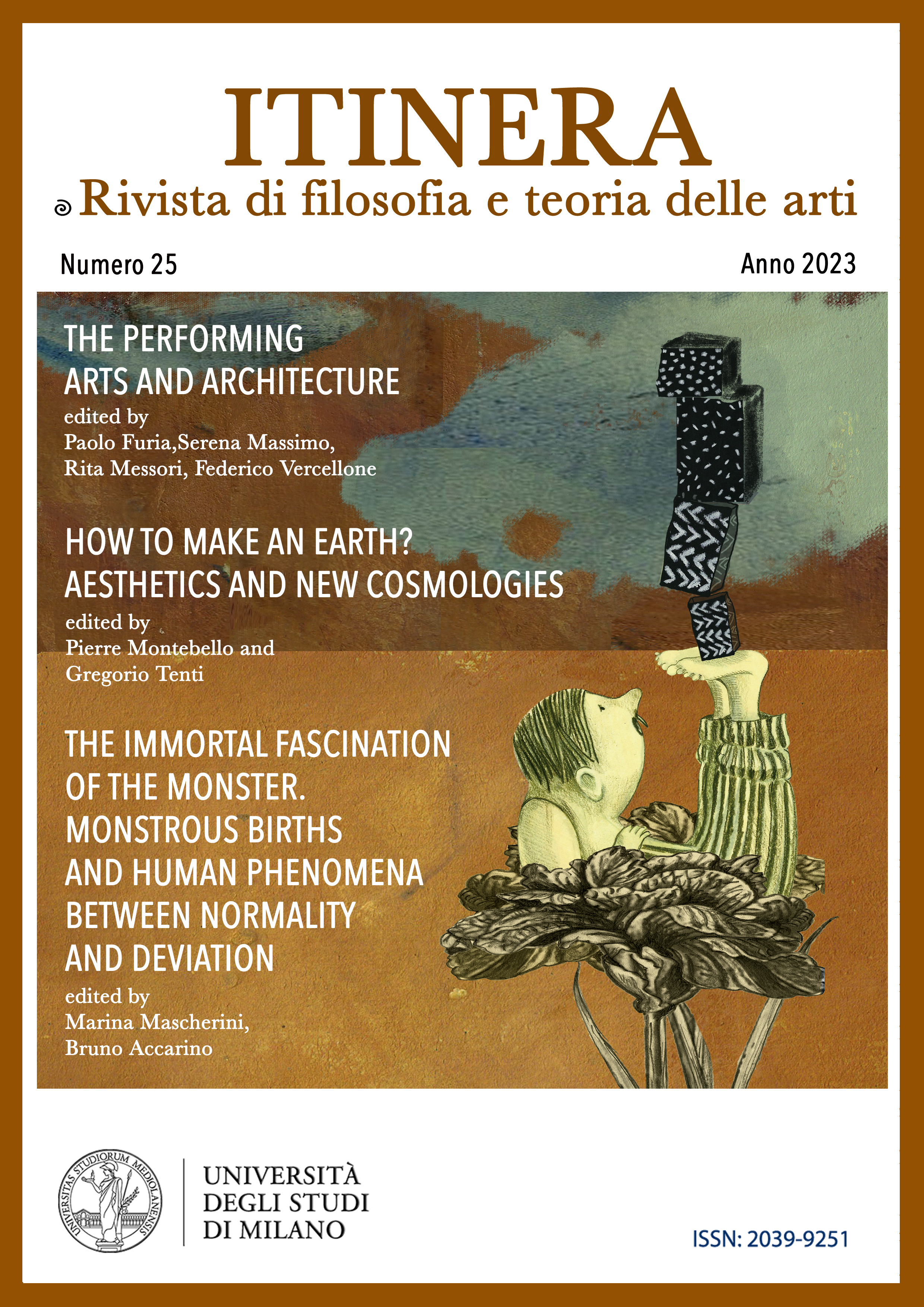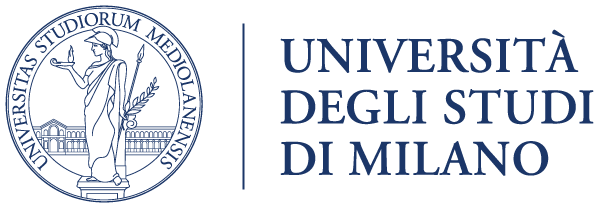Mouvement vivant et architecture: la marche, les escaliers chez Émile Jaques-Dalcroze et Adolphe Appia
DOI:
https://doi.org/10.54103/2039-9251/20799Parole chiave:
dance, butoh, performance, sublimeAbstract
At the turn of the nineteenth and twentieth centuries, through the eurhythmics of Émile Jaques-Dalcroze, a new relationship between music and movement was established, which closely involved dance and architecture. Our emphasis, here, will be put on the transformations related to space, with regard to the stage reform by Adolphe Appia, Dalcroze’s friend and collaborator. It is through Appia’s drawings, the Rhythmic Spaces, made between 1909 and 1911, that the connection between living movement and architecture will be approached. In particular, one calls in question the status of straight lines, horizontal and vertical, of which the staircases, on the drawings, are emblematic. These lines, contrasting with the curving and serpentines lines that mark the influence of the dancing movement in the paintings from that period, must be understood with respect to the Dalcrozian conception of rhythmic feeling. Aliveness, for him, which is not to be separated from the relationship to measure - itself alive -, can be acquired by varied and complex exercises of marching within the framework of rhythmic education. Through architecture arises a musical conception of space in rupture with the perspectival conception of pictural space, as the former doesn’t dissociate any more mobility and immobility, aliveness and inertia, grace and gravity.
Riferimenti bibliografici
Ansermet, E., Les fondements de la musique dans la conscience humaine et autres essais, Préface de Jean Starobinski, Laffont Bouquins, Paris 1989.
Appia, A., « La musique et la mise en scène », Œuvres complètes, édition élaborée et commentée par M.-L. Bablet-Hahn, tome II, L’Âge d’Homme, Lausanne 1986.
Appia, A., « L’Œuvre d’art vivant », Œuvres complètes, édition élaborée et commentée par
M.-L. Bablet-Hahn, tome III, L’Âge d’Homme, Lausanne 1988.
Bachmann, M.-L., La Rythmique Jaques-Dalcroze, une éducation par la musique et pour la musique, La Baconnière, Neuchâtel 1984.
Beacham R. C., Adolphe Appia, Artist and Visionary of the Modern Theater, Harwood Academic Publishers, 1994.
Bode, R., Der Rhythmus und seine Bedeutung für die Erziehung, Eugen Diederichs, Jena 1920.
Boissière, A., Musique Mouvement, Manucius, Paris 2014 .
Boissière, A., Chanter, narrer, danser Contribution à une philosophie du sentir, Delatour France, Sampzon 2016.
Boissière A., « Jouer autrement : les exercices d’Émile Jaques Dalcroze », Methodos 21, 2021, https://journals.openedition.org/methodos/7677.
Jaques-Dalcroze, É., Le rythme, la musique et l’éducation, nouvelle édition publiée en collaboration avec l’Institut Jaques-Dalcroze de Genève à l’occasion du centenaire de la naissance de l’auteur, Foetisch Frères S.A., Lausanne 1965; première édition 1920.
Klages, L., La nature du rythme, traduction et présentation par Olivier Hanse, L’Harmattan, Paris 2004.
Kuschnig C. et Pellois A. (dir.), Le rythme une révolution! Émile Jaques-Dalcroze à Hellerau, Slatkine, Genève 2015.
Pierre, A., « La musique des gestes, sens du mouvement et images motrices dans les débuts de l’abstraction », Aux origines de l’abstraction, 1800/1914, Réunion des musées nationaux, Paris 2003.
Séchan, L., « La rythmique et la plastique animée de E. Jaques-Dalcroze », La danse grecque antique, De Boccard, Paris 1930.
Vicovanu R., « In situ. Corps et espace chez Appia et Le Corbusier », Faces 69, Journal d’architecture, été 2011.
Dowloads
Pubblicato
Fascicolo
Sezione
Licenza
Copyright (c) 2023 Anne Boissière

Questo lavoro è fornito con la licenza Creative Commons Attribuzione - Condividi allo stesso modo 4.0.
Gli autori che pubblicano su questa rivista accettano le seguenti condizioni:
1. Gli autori mantengono i diritti sulla loro opera e cedono alla rivista il diritto di prima pubblicazione dell'opera, contemporaneamente licenziata sotto una Licenza Creative Commons - Attribuzione - Condividi allo stesso modo 4.0 internazionale che permette ad altri di condividere l'opera indicando la paternità intellettuale e la prima pubblicazione su questa rivista.
2. Gli autori possono aderire ad altri accordi di licenza non esclusiva per la distribuzione della versione dell'opera pubblicata (es. depositarla in un archivio istituzionale o pubblicarla in una monografia), a patto di indicare che la prima pubblicazione è avvenuta su questa rivista.
3. Gli autori possono diffondere la loro opera online (es. in repository istituzionali o nel loro sito web) prima e durante il processo di submission, poiché può portare a scambi produttivi e aumentare le citazioni dell'opera pubblicata (Vedi The Effect of Open Access).





